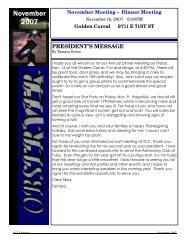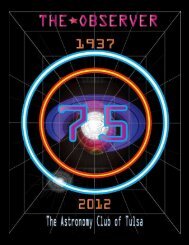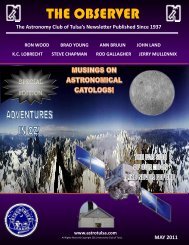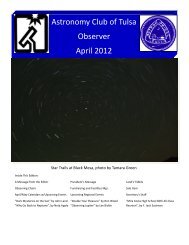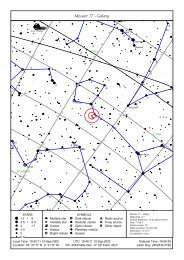Jan - Astronomy Club of Tulsa
Jan - Astronomy Club of Tulsa
Jan - Astronomy Club of Tulsa
You also want an ePaper? Increase the reach of your titles
YUMPU automatically turns print PDFs into web optimized ePapers that Google loves.
Astronomical League Analemma Program, by Brad Young, Ct’d.<br />
Results<br />
The results were not as accurate as I had hoped, but they do provide some idea <strong>of</strong> what the analemma looks<br />
like. The major error appears to be in time, with minor errors introduced by measurement <strong>of</strong> distance. This is<br />
certainly historically predictable; accurate timekeeping is one critical reason for deriving the EoT in the first<br />
place. The three methods had their problems as already mentioned above, but the method I’d hoped would<br />
be most accurate (BOK) suffered from another unforeseen one – map projection. I suppose I could have<br />
painted spots on the parking lot, but that seemed more risky than running around with a strange box!<br />
Probably the most important lesson I was reminded <strong>of</strong> is that experiments can be messy. Even using three<br />
methods did not negate the systemic errors that <strong>of</strong>ten affect empirical data. I did learn a few things about<br />
computer time updates and using a webcam. I also gained a new respect for the ancient astronomers that<br />
first began to measure the analemma and derive Earth’s orbital details from it.<br />
14



